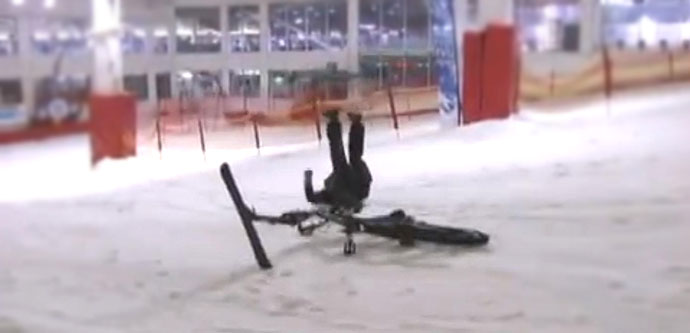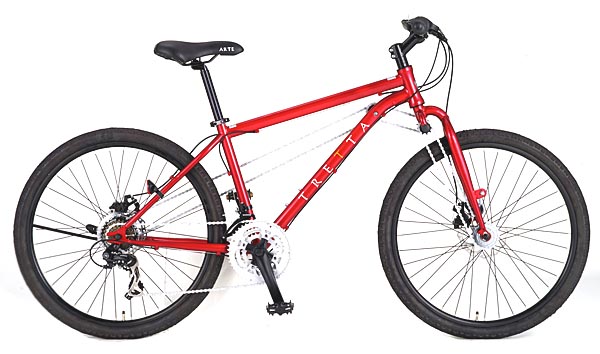With much of Britain expecting the worst of this winter’s weather, commuter cyclists face uncertain conditions cycling in snow. There are a number or accessories available to cyclists who want to adapt their bikes for snowy conditions, from metal-studded tyres to full caterpillar track systems, but a few simple tips can help you fare better on slippery roads than many motorists.

Swapping the front wheel of your bicycle for a ski blade does not guarantee grip
2-wheel drive
Japanese bicycle manufacturer Tretta has a range of 2 wheel drive bikes. The MTB uses an additional – and very long – that chain stretches from the rear hub to a set of small cogs near the top of the down tube. There are advantages in having drive to both wheels driven, but this design adds weight and complexity.

Caterpillar tracks
An even more complex answer to the question of how best to cycle in snow is the caterpillar track bike. We tested a caterpillar track bike this week and found it doesn’t perform any better than a conventional mountain bike.

Ice tyre hack
Cyclists tend to be resourceful, but this solution to the problem of icy roads is particularly ingenious. Imaginative cyclists are adapting their bikes for use on icy roads by fitting their bicycle tyres with cables ties. The cable ties take only a few minutes to fit and provide impressive traction on the most slippery of surfaces. The cable ties are inexpensive to buy, and can be fitted to bikes (with coaster brakes) without tools in very little time. It is possible to buy tyres fitted with metal spikes, which give a shorter braking distance than the tyres fitted with cable ties, but can cost around £50 a piece.
Cable ties cost about 3 pence each and each tyre needs around 15 ties. Once the period of cold weather has passed they can be cut away and discarded. The technique is suitable only for bicycles fitted with disc or hub brakes, but it is possible to adapt any bicycle tyre for use on ice by adding pop rivets for less than £2.
Cycling in snow
It’s easy to assume that a bicycle is the worst possible option in snow, but this is not the case. Although riding on ice can prove tricky, a light covering of snow should not present any difficulties for an experienced rider.
Cycle insurance
Every policy from the ETA includes new-for-old replacement & cover for accidental damage (race events included), third party insurance, personal accident cover and if you breakdown, we will recover you and your bike. Get an instant online quote
One simple policy
For over twenty years we have been providing straightforward, affordable bicycle insurance. Whether you use your bike to commute, shop, race or amble in the park, ETA Cycle Insurance has you covered.
Many cycle insurers offer very limited cover, charging extra for features we believe should come as standard – such as third party cover, personal accident or extension of your cover to family and friends. ETA cycle insurance provides one fully-comprehensive package for total peace of mind, whatever your cycling needs.

Stephen
Last time we had “proper” snow in England, I treated myself to Continental Winter tyres. No metal studs, just a different tread pattern. I was amazed at how perfectly effective they are. I saw miles of snowy countryside that most other people missed out on because they couldn’t access it.